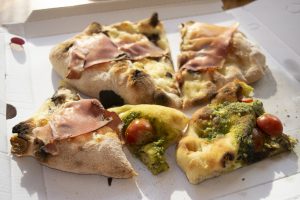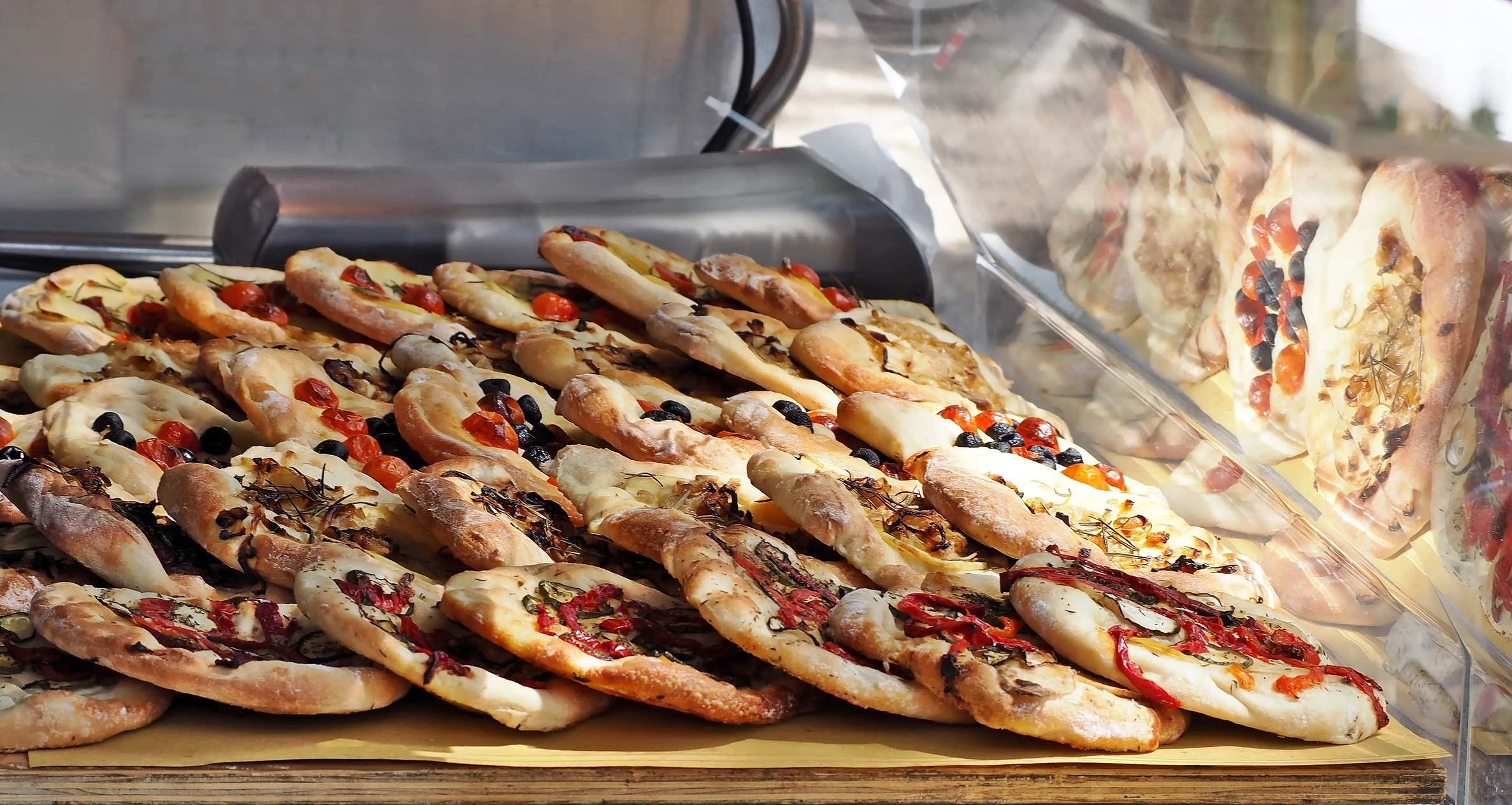A wholesale bakery connected to a restaurant, the “Mead Restaurant and Bakery” built around 1910. A wall was hiding a coal-oven that measured about 15′ wide and 15 deep whose façade was covered by its original subway tiles, full of dust and dirt. The story behind Montesacro Pinseria starts here, on 510 Stevenson in San Francisco. It happened that, for the first time since he had begun seeking a location to launch a Roman style pizzeria, Gianluca Legrottaglie, originally from Rome, could find an energy that he hadn’t felt anywhere else. When he was offered to knock down the ovens of that old bakery and build a fancy kitchen, he preferred to keep everything as it was, in order to offer a concrete jump in the past.

One of his goals is to share all the memories of his childhood with his customers, of his mom roasting lamb and potatoes, of aunt Rosa’s “pomodori ripieni” (stuffed tomatoes), and the ritual of stopping at local street vendors to get porchetta, sott’oli, bread, cheese for the family. That’s why Montesacro Pinseria wants to gather people and celebrate life like we used to do back in the days.
Gianluca, can you tell us a bit of your story in San Francisco?
I moved to San Francisco in May 2010 after living in New York for about 12 years. I’ve always wanted to live here and have my own place but did not have a good reason to take that step, until I was offered to join a newly opened restaurant in Mint Plaza called 54 Mint.
Montesacro – Why did you pick this name, recalling a particular neighborhood in Rome?
The name comes from one of the neighborhoods in Rome and wants to be an homage to those people who lived the tumultuous days of the aftermath of Second World War, as often described by Pierpaolo Pasolini. Another reason why our décor resembles Rome from those days.
Your food is influenced by the Roman traditions. What’s your relation with it?
The idea was to put on the menu memories from my childhood, when my parents would “treat us” by taking us to a “Fraschetta” on a Sunday Lunch. The word Fraschetta was originated in the village of Frascati outside of Rome, where historically speaking, peasants traveling to the Eternal City to sell their goods, ricotta, butter, pecorino, olive oil etc, would stop and get “Ristoro” (refreshment)…eat a bite and drink a glass of wine, or two. Inspired by that, I wanted a convivium where people could meet, socialize, drink and eat real food, made from great ingredients, based on home-cooking traditions, and most importantly transport people somewhere they’ve never been in their life, or rather, bring certain people back to those days and distract them from their routine and usual dining experience.
How would you explain the word “pinsa” to somebody who has only experienced pizza so far?
Pinsa has roots in the Roman time and the word comes from the Latin verb “Pinsere” (to stretch, to flatten). Pinsa was made by peasants living outside the imperial walls, in the countryside. It was made from leftover flours of all kinds, such as barley, spelt, millet etc…mixed with herbs and water then baked on stones. Modern day’s Pinsa dough is made from a blend of soy, rice and wheat flour all GMO free and organic, proofed for a minimum of 3 days. Once ready, the dough gets stretched to an oval shape over rice flour to give it that extra crispiness on the outside before being baked at 680 degrees for about 3 minutes in a stone-base electric oven as after studying and researching I discovered the wood burning was a classier version but not the healthiest. The result is a light, easy to digest, crispy on the outside and soft inside flatbread.
How much can ingredients make a difference in preparing the perfect pinsa?
We strongly believe that the real difference in eating a good healthy meal is to know where ingredients comes from and how is prepared, starting from selecting the best extra virgin olive oil, best salts and the highest quality/seasonal ingredients to top our pinsas with. We introduced Garum, fermented fish sauce, cured tuna heart, tomatoes from Piennolo in Campania, our mozzarella, burrata and ricotta are all imported and fresh delivered every week.
What’s the toughest challenge you are facing since you opened Pinseria Montesacro?
The area and its reputation have gotten a lot better today. We were able to install string lights over Stevenson street, remove street parking to avoid activities in between and general help from the City and local associations providing more security to our patrons and offering more opportunities to new businesses that are moving in.
Why do people who love Italian food should choose Pinsa over Pizza? Can that be even a choice?
I am a strong supporter of anything that provides great quality food for people as a result, therefore I will never say that one is better than the other, Pinsa is not pizza, the dough and the way they are processed make them different, maybe part of the same family. Pinsa has been an option for customers that have gluten intolerance because of its low content of wheat and is a great alternative when you want something light and easy to digest and overall very tasty and healthy.
































